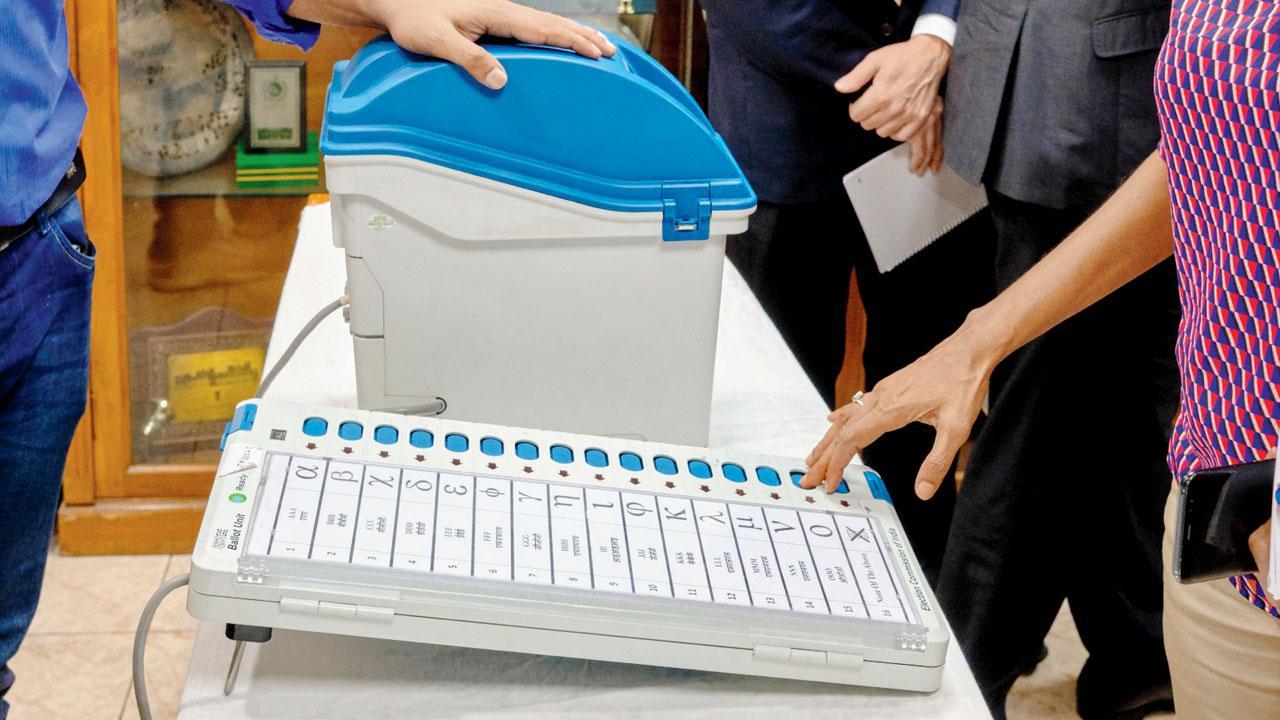The abbreviation of the headline would read EVM—the most talked about machine in the ongoing general elections. However, in Mumbai’s case it’s to reiterate how much is at stake when it comes to saving our green cover

Representation Pic
 The Views. That’s the name of the ‘township’ that is currently under construction right beside the site where last Monday’s horrific hoarding collapse occurred that claimed the lives of unsuspecting citizens. I wonder what ‘view’ the builder had in mind while planning the name in the first place because, it’s a typical urban jungle whichever way you wish to see it—the highway, concrete structures, slum clusters and traffic zooming past at all hours. There’s very little else, no matter how optimistic one wishes to be while looking out from the window of the sample flat. As facts and figures emerged from the tragedy, we also learnt that trees were poisoned to clear the ‘view’ for this particular killer hoarding. The trees, once again, had to pay the price for the cost of crass commercial interests. Coincidental or otherwise that the name of the company is called Ego Media. It doesn’t get more Kafkaesque.
The Views. That’s the name of the ‘township’ that is currently under construction right beside the site where last Monday’s horrific hoarding collapse occurred that claimed the lives of unsuspecting citizens. I wonder what ‘view’ the builder had in mind while planning the name in the first place because, it’s a typical urban jungle whichever way you wish to see it—the highway, concrete structures, slum clusters and traffic zooming past at all hours. There’s very little else, no matter how optimistic one wishes to be while looking out from the window of the sample flat. As facts and figures emerged from the tragedy, we also learnt that trees were poisoned to clear the ‘view’ for this particular killer hoarding. The trees, once again, had to pay the price for the cost of crass commercial interests. Coincidental or otherwise that the name of the company is called Ego Media. It doesn’t get more Kafkaesque.
ADVERTISEMENT
Years ago, I recall a similar scenario where environmentalists and city lovers were faced with a similar bit of grim news. A certain swanky store had opened its doors in SoBo where, overnight, it was noticed how massive trees lost their foliage; once again, murmurs were heard that ‘the view’ was important in the overall scheme of things. The cries went hoarse, and as with such cases, they also died down eventually, for lack of support. Today, happy shoppers pass by these half-dead survivors before hopping into their swish cars, unaware or oblivious of this dark backstory.
Cut to scores of towers and townships, infrastructure projects like the Metro lines, mega roadworks and yes, innumerable hoardings, apart from other development projects simultaneously underway in the city that particularly picked up pace in the second half of the lockdown; each one of them that comes to mind, and have been brought to public attention, thanks to coverage in this publication, have reported a parallel loss of green cover. But rarely have we witnessed serious attempts to undo the damage with re-plantation. The race for development is more critical. Yes, we hear you.
One of the routes that we often pass by is the T junction that connects Sion with Dharavi and Bandra East. The area is lined by the Mithi river and mangroves. Over the years, we’ve witnessed dumping of concrete debris and other garbage to the point where a first-timer will be shocked that a water body and green cover actually exists beneath these eyesores. Another reminder to see how much we are messing with the environment is the view from the Sion-BKC Connector. The muck and filth on either side of the river’s ‘course’ is enough to let sirens go berserk. Every monsoon, the rising water levels make us shudder and bring back visions of 2005. But public memory is fickle, clearly. The upcoming Mulund Goregaon Link Road is another reminder where giant trees have been hacked in this grand ‘vision’ to better connect the city.
Speak to any environmentalist or scientist and they will tell you how much the Arabian Sea has warmed, and how this will continue to impact the west coast, especially Mumbai. I recall a chat from nearly a decade ago with Amitav Ghosh, while he was in Mumbai for his Ibis Trilogy tour. He mentioned towards the end, that each time he visited the city, it concerned him to see that civic administrators were being casual about climate change. He spoke of the need for robust, visionary policy making, and safeguarding its green cover. Even as a non-Mumbaikar, it was heartwarming to see how much he cared for the city’s health.
Earlier this year, Mumbai environmentalist Bittu Sahgal spoke at a climate conclave that more such catastrophes [like the 2005 deluge] threaten young Mumbaikars. Later, while being part of a World Heritage Day charter that was published in this newspaper, he reiterated that more than flyovers, bridges and tunnels, the young must know that the finest infrastructure are the green garland of mangroves that protect Mumbai from sea surges, as well as open green spaces like the Sanjay Gandhi National Park that ensures climate and water security. One point that stuck—how critical it was to ensure that tree-studded wild pockets within private and public campuses are protected because they moderate our climate and keep us healthy. It’s a simple observation that we are sure is getting flouted as we type out this column. “We have no Plan B,” Sahgal often reminds us, as a genuine city worrier.
And it is voices like his that echo each time we spot those diminishing green spaces on our commute or as we drive across the city’s length and breadth. We need to act. Fast. Who knows, a day might come when we might go back to being seven, or islands. Or even fewer...
mid-day’s Features Editor Fiona Fernandez relishes the city’s sights, sounds, smells and stones...wherever the ink and the inclination takes her.
She tweets @bombayana. Send your feedback to mailbag@mid-day.com
 Subscribe today by clicking the link and stay updated with the latest news!" Click here!
Subscribe today by clicking the link and stay updated with the latest news!" Click here!







